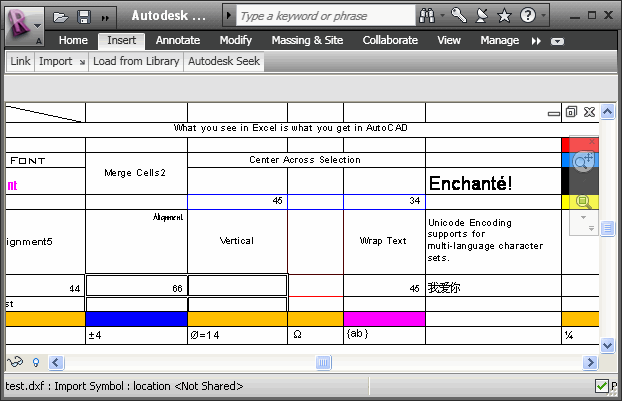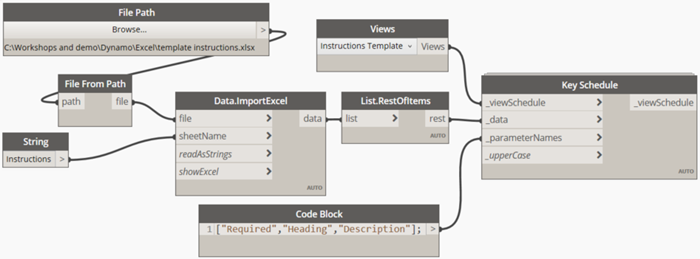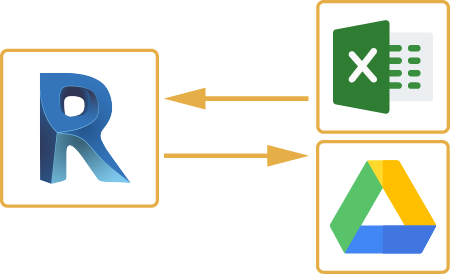Revit Tools: Your Secret to Precision and Performance
Wiki Article
Damaging Barriers: Excel Importation Techniques for Advanced Revit Users
Explore numerous information importation approaches and master Excel integration to enhance your Revit modeling capacities. With our ideas and tricks, you can overcome importation obstacles and come to be a true specialist in using Excel for your Revit tasks.Advanced Revit Users: Leveraging Excel for Importation
You can easily utilize Excel for importation as an innovative Revit individual. Excel is an effective device that can significantly boost your workflow and performance in Revit. With its capacity to take care of big quantities of data and carry out intricate estimations, Excel can be an important possession in managing and organizing your task information.One means to leverage Excel for importation is by utilizing the "Web link Excel" function in Revit. This feature permits you to link an Excel spread sheet straight into your Revit job, allowing you to upgrade and synchronize data between both programs. This can be specifically helpful when handling timetables or tracking adjustments in your project.
One more method to make use of Excel is by utilizing the "Import/Export" feature in Revit. This feature allows you to import and export data between Revit and Excel, giving you the flexibility to work with data in both programs. You can import data from Excel into Revit to produce elements such as rooms, doors, or walls, and you can additionally export information from Revit to Excel for additional analysis or reporting.

Exploring Information Importation Methods in Revit Using Excel
Exploring how to import data from Excel into Revit offers efficient methods for integrating info. When you import data from Excel, you can perfectly transfer data such as area timetables, material listings, and devices information into your Revit job. This process allows you to save time and initiative by staying clear of hand-operated information entrance.To import data from Excel into Revit, you can utilize the "Import/Export" attribute. This attribute allows you to map the Excel information fields to the corresponding Revit parameters, guaranteeing that the information is correctly appointed within the design. By choosing the suitable import options, you can regulate exactly how the data is imported and how it interacts with your task.
An additional technique for importing data from Excel into Revit is by utilizing Eager beaver. Dynamo is an aesthetic programs tool that incorporates with Revit and enables you to automate operations and tasks. With Dynamo, you can develop personalized scripts that import data from Excel and manipulate it within your Revit task. This technique offers a lot more flexibility and modification choices.
Grasping Excel Integration for Advanced Revit Modeling
One vital technique is importing information from Excel spread sheets directly into your Revit version. With a few easy actions, you can map resource the Excel columns to the equivalent Revit criteria and import the data accurately.One more beneficial method is exporting data from Revit to Excel. This allows you to draw out details from your version, such as schedules or material quantities, and evaluate it in Excel making use of solutions, graphes, or other powerful tools. By leveraging the abilities of Excel, you can do intricate estimations, create customized reports, and gain useful insights into your job.
Along with data transfer, Excel integration can automate recurring jobs in Revit. By developing macros or manuscripts in Excel, you can automate procedures like producing views, generating sheets, or applying basic family members - revit tools. This not only saves time but also makes certain uniformity throughout your job
To grasp Excel assimilation in Revit, it is critical to recognize the information structure and how Revit interacts with Excel. By acquainting on your own with the offered devices and methods, you can unlock the complete possibility of Excel combination and take your Revit modeling to the next degree.
Conquering Importation Challenges: Excel Techniques for Revit Specialists
When getting over importation difficulties, it's vital to be familiar with reliable Excel methods that can benefit professionals in Revit. As an advanced Revit individual, you recognize the significance of flawlessly importing data from Excel into your tasks.
An additional useful method is making use of the "Transpose" function in Excel. This enables you to transform information from rows to columns or the other way around. When importing data into Revit, this can be especially helpful when you have data in an upright layout in Excel, but you need it to be in a straight format in Revit.
Furthermore, using Excel formulas such as VLOOKUP and INDEX-MATCH can significantly help in mapping data from Excel to Revit. These solutions allow you to browse for details values in Excel and get equivalent data from another column. This can save you effort and time when importing big datasets right into Revit.
Excel Information Importation Advice for Advanced Revit Users
By familiarizing yourself with effective Excel tricks and pointers, you can boost your information importation process as an advanced customer of Revit. In addition, using Excel's "Paste Unique" attribute enables you to paste data from Excel right into Revit while preserving formatting, such as cell shade or font style. Another helpful technique is to use Excel's "Find and Replace" feature to swiftly make changes to your data prior to importing it right into Revit.
Final Thought
You have actually now found out valuable methods for importing data from Excel right into Revit as an advanced individual. Go in advance, break those obstacles and succeed in your Revit projects!
When importing data right into Revit, this can be particularly valuable when you have information in a vertical format in Excel, but you require it to be in a straight format in Revit.
Moreover, making use of Excel formulas such as VLOOKUP and INDEX-MATCH can substantially assist in mapping data from Excel to Revit. Furthermore, making use of Excel's "Paste Unique" attribute allows you to paste data from Excel into Revit while keeping format, such as cell shade or font style.
Report this wiki page